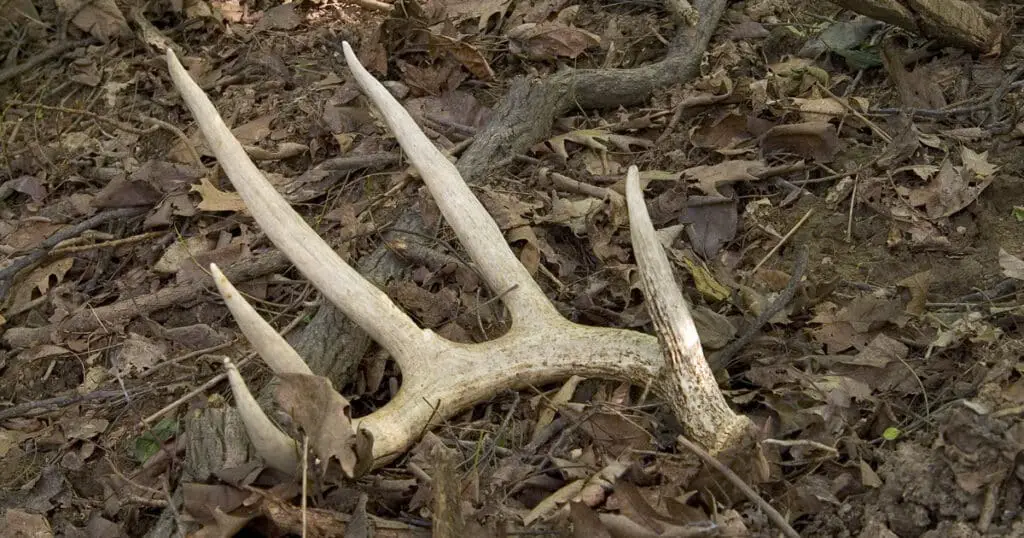Unlike horns, antlers fall off and regrow every year. That’s why every buck (male deer) sheds its antlers once annually. Antler shedding and regrowth are impacted by several different factors, but they all relate back to a buck’s fluctuating testosterone levels. Let’s find out the answer to the question when do deer shed their antlers?
Bucks shed their antlers every year after the rut (mating season) ends and testosterone levels decrease. Antler shedding season generally ranges from January to March, and it sometimes even extends to April. Exactly when each individual buck loses its antlers will depend on several different factors.
What Factors Determine When a Deer Sheds its Antlers?
There are a variety of factors that play a role in determining when a buck sheds its antlers, but there are five primary factors which determine when a buck will shed his antlers:
- Hormones,
- Photoperiodism,
- Physical Injuries,
- Malnourishment and Other Forms of Stress, and
- Living in Close Proximity to Other Bucks.
Let’s dig into each of these factors a little more closely.
Hormones
Hormones play a key role in when a deer sheds its antlers. In other words, a buck’s level of testosterone is the most important factor in antler shedding and growth.
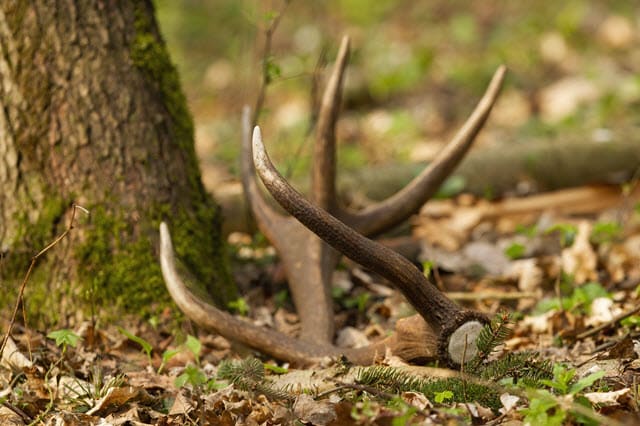
Testosterone levels fall at the end of the breeding season, and that’s when the shedding process starts. Then, in the summer, the return of some testosterone means that the antlers are able to grow.
A buck‘s testosterone level usually starts increasing in July and gets to its highest between late October and early November. This is during the breeding season.
Once the rut is over, the deer’s level of testosterone falls. It will stay low from the end of December to July.
Bucks need a high testosterone level to keep their antlers in place on their heads.
While seasonal changes have the greatest impact on testosterone level in deers, there are some other factors that may have an effect on this hormone (and therefore on the antler shedding and growth cycle).
Photoperiodism
Photoperiodism refers to changes in day length. Buck testosterone tends to increase during the time of year when days are getting shorter and daylight is decreasing.
During this time of year, antlers will develop and mineralize, as well as eventually lose their velvet.
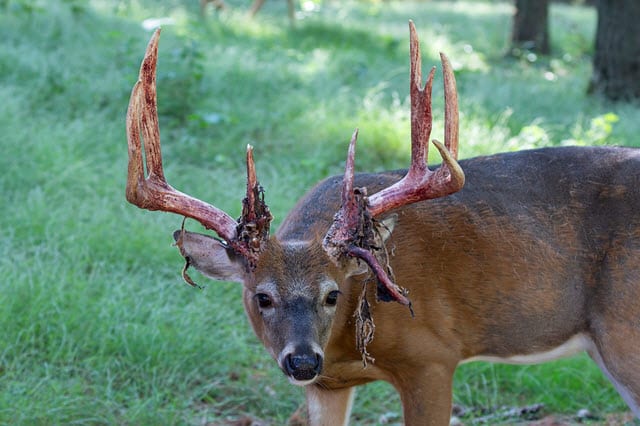
When the daylight starts to increase as the spring approaches, deer testosterone starts to decrease.
Antlers are only able to stay connected when bucks have relatively high testosterone levels. When testosterone levels drastically decline, the bone tissue key to connecting the antlers dissolves.
This process is caused by bone cells called osteoclasts.
Osteoclasts carry out calcium reabsorption between the pedicle and the attached antlers. This leads to antler shedding.
Physical Injuries
Physical injuries can affect a buck’s testosterone levels. Of course, bucks often sustain injury to their antlers when fighting in the breeding season.
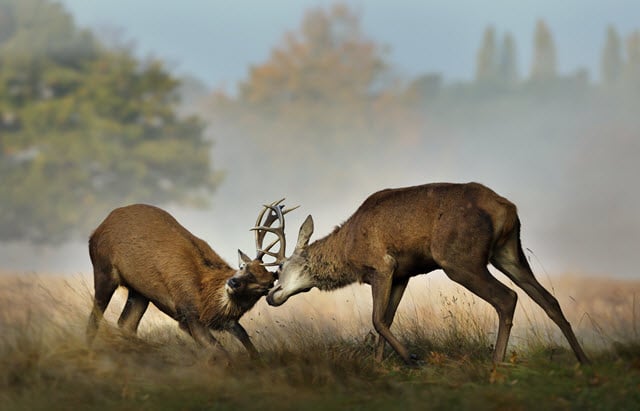
Other injury sources may include hunting incidents (for example, if a hunter tries to shoot a deer and hits the antlers instead) and car collisions. These events may lead to early antler shedding.
Of course, these kinds of injuries may also cause direct injury to the antlers that will weaken them and make them more likely to be unviable earlier.
If a hunter shoots a deer and ends up causing injury instead of death, even if the injury isn’t anywhere near the antlers or head, the animal will weaken. This compromises hormone production.
Hormone disturbance may lead to problems with antlers, including early shedding and impeded re-growth.
Malnourishment and Other Sources of Stress
A buck suffering from malnourishment or starvation will probably shed its antlers earlier than it would otherwise.
Like every other part of a deer’s body, the buck’s antlers need proper nutrition and nourishment. If they don’t get what they require to eat, early shedding is more likely.
Malnourishment in bucks often occurs during the breeding season (the rut). During this time of year, bucks aren’t focusing on nutrition.
This may lead to early antler shedding. Of course, antler shedding is generally expected once the rut is finished.
That’s why it’s tricky to tell how much early shedding is due to normal hormonal changes or hormonal changes caused by malnutrition. Often, it’s a mixture of the two.
Living Around Several Other Bucks
If a buck lives in a herd with several other bucks, it will probably have higher testosterone levels for a longer period of time.
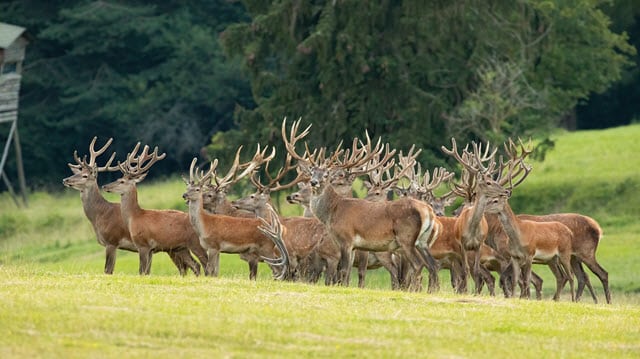
This will probably lead to notably intense mineralization of the pedicle, from which the antlers grow. This is why these circumstances may lead to antlers shedding later in the year.
It takes between two and three weeks after the shedding process kicks in and begins for the antlers to actually fall off. Antler shedding is also referred to as the “drop.”
How Do Deer Help Their Antlers Fall Off?
There are several things deer do to encourage their antlers to fall off during shedding. For example, they often rub their antlers on objects.
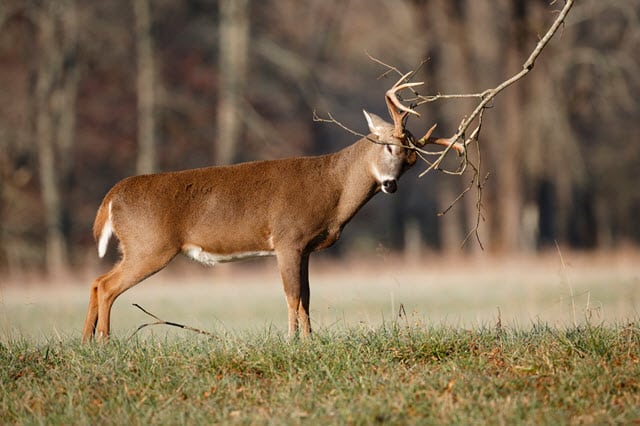
Bucks sometimes shed their antlers at different times. For example, a buck may shed one antler but then still have a single antler for as long as two or three days before they finally lose it.
This is why it’s possible to see a buck with just one antler in the wild.
What Causes Abnormal Antler Growth?
Even biologists aren’t yet aware of absolutely every possible reason for abnormal antler growth in deer. However, there are certain general causes that have been agreed upon.
Injury
As mentioned earlier, direct injury to the antlers can cause them to shed earlier or to grow back abnormally. Other kinds of injuries, such as injuries that affect other parts of the body, may also affect the antlers.
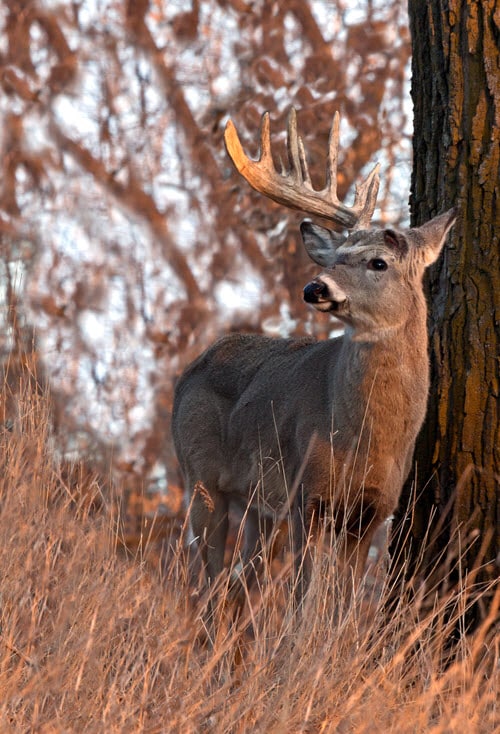
That is because injuries may weaken the animal and impact its testosterone. As testosterone is directly linked to the antlers, this may impact when deer shed and re-grow their antlers.
Malnutrition and Disease
Disease and malnutrition are likely to cause problems with the antler growth cycle. Of course, malnourishment in itself often makes an animal more susceptible to disease.
Certain kinds of parasites in deer may also create issues with antlers.
It takes even more energy for antlers to grow than it takes for them to be maintained.
If a buck has inadequate nutrition and its body condition suffers, it will have difficulty with the antler growth cycle. This circumstance may lead to early shedding and delayed antler growth.
When Should You Look for Shed Deer Antlers?
If you want to find shed deer antlers, it’s best to look just after the snow melts at the end of winter. You may have to wait until then if you live in a region where there are deep piles of snow.
If you live somewhere where there is less snow, you may be able to look a bit earlier, but you may not find as many as you would later on.
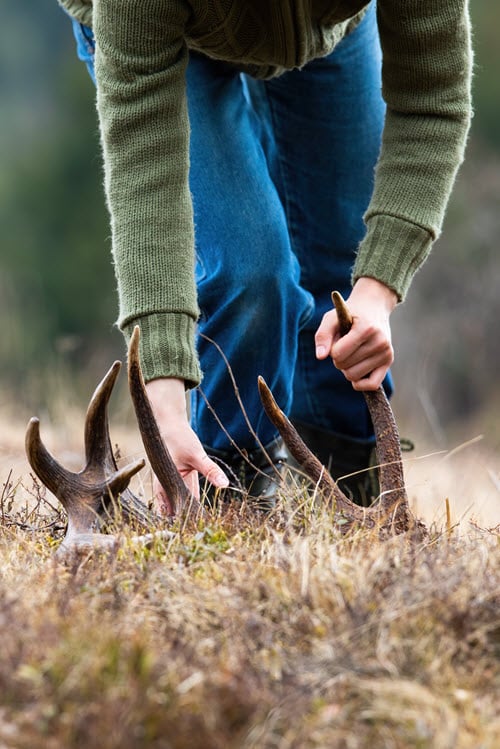
If you have deer in the area, in many cases, you will find shed antlers lying around even if there is still a bit of snow. Depending on the circumstances, you may find several.
Deer often end up leaving their shed antlers in their bedding areas. Deer bedding areas are mostly in areas with heavy cover and away from where humans tend to walk.
Remember, deer want to bed down in the least vulnerable areas. Bedding areas are often near food sources.
Deer want to have consistent access to what they need to eat. In many cases, they will have to travel sizeable distances to find their food, but they want to reduce this travel time as much as possible.
After all, the more time they spend traveling, the more potentially visible they are to predators, including humans.
When Do Deer Have their Largest Antlers?
Most male white-tailed deer will have the largest antlers of their lives when they are between five and seven years old.
If the deer live in a difficult environment, for example when it comes to nutrition, they may reach their maximum antler size later rather than sooner.
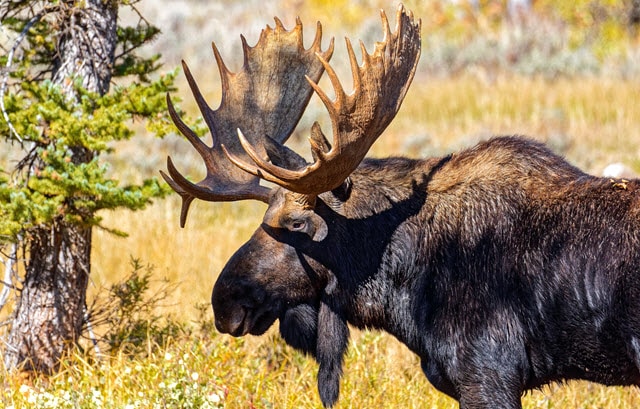
You’re most likely to find the largest shed antlers in areas where deer enjoy consistent access to an adequately balanced diet in every season.
When it comes to regrowing antlers, deer especially need support in calcium being redeposited into bone, including their antlers.
If you go shed antler hunting in areas with excellent deer nutrition, you’re more likely to find larger antlers than you would somewhere else.
Final Thoughts: When Do Deer Shed Their Antlers?
As we’ve learned here, bucks shed and re-grow their antlers every year. If you want to find shed antlers, you must understand when and how the shedding process occurs.
Now you have the knowledge needed to be an effective shed antler hunter. Here we learned:
- Bucks shed their antlers every year after the rut
- There are other factors that may impact when shedding happens, such as physical injury and malnutrition
- Deer antlers may grow abnormally if there is injury or disease
- You should look for shed antlers at the end of the winter

